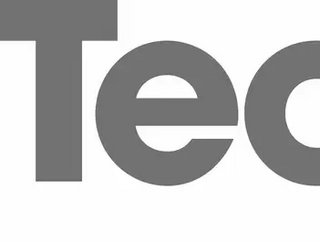Node: mine cryptocurrencies using less power than a toaster?

Cryptocurrency mining for Bitcoin, Etherium and other blockchain based currencies has been a tricky, confusing and sometimes controversial field for a while now. Just this week, Uzbekistan’s Ministry of Energy announced plans to introduce a massive energy tax aimed at crypto miners, and a Russian nuclear engineer was fined $7,000 for trying to mine bitcoin. At work. Using one of Russia’s most powerful, government-owned supercomputers. In a high-security underground bunker. It’s been a great week.
Crypto mining operations these days are thought of as huge sheds of whining GPU-festooned rigs, hammering away at whatever digital rockface they get bitcoin from, while a man in dark glasses and a hoodie furtively taps commands into a laptop and sips his Code Red Mountain Dew.
While there is absolutely a grain of truth to this conception, the reality is significantly less compatible with a Vice special documentary or an edgy Amazon Original Drama. Quite simply, according to Coinbase:
“Mining is the process of validating other people’s transactions with a computer and then adding them to the long, public list of all transactions known as the blockchain. In exchange, people get rewarded with cryptocurrency.
Anyone with a computer and an internet connection can become a miner. But before you get excited, it’s worth noting that mining is not always profitable. Depending on several factors, such as which cryptocurrency you’re mining, how fast your computer is, and the cost of electricity in your area, you may end up spending more on mining than you earn back in cryptocurrency.”
The balance between computing power, energy costs and the value of a particular crypto can easily make mining an unprofitable and impenetrable pursuit. It’s not exactly wading into a river in Northern California with a shovel and a bit of cheese cloth (you got me - I don’t know how real life mining works either) and seemed for a long time to be the ordained domain of a specific set of dedicated technologists.
SEE ALSO:
Now, all that may be about to change. Meet Node: a new plug and play device from Incognito, an electronics startup in Redlands, California.
Launched today, Node is being marketed as the perfect device for those who are “curious about crypto but put off by the complexity,” that promises “no messing about with exchanges to find the best crypto to buy. Now, anyone can generate Bitcoin, ether and more, for less energy than it takes to power their laptops. Building a mining rig or entering lines of code are now things of the past. The hand-sized device just needs to be plugged into any socket & it will start running.”
"Node earns crypto while being smaller than an Alexa, and more energy-efficient than a toaster" - Incognito
Node’s unique selling point is its energy efficiency. Node runs a next-generation, energy-efficient blockchain, the Incognito Chain. The Incognito Chain is a Proof of Stake chain, which replaces the need for computational power with simply staking cryptocurrency to validate new blocks and earn rewards, according to the company’s press release. Typically, miners can only earn one coin per chain. This is where Node shines. The privacy-focused Incognito blockchain is designed to attach to any major blockchain to allow anyone to send and receive coins confidentially. So when someone makes a private BTC transaction, someone else will make BTC, the same goes for ETH & other coins.
That’s all quite technical, but the upshot is that Node draws just 1.5 kWh per day – or about 8 cents in the US.
Now for the returns: Incognito currently predicts that a Node unit will earn its user about $25 per month and, when it launches on October 8, will cost $199 for early bird purchases and $400 retail.
This means that a machine bought at $400 needs to run for about a year and a half before it recoups its initial cost and, I don’t know about you, but there are very few appliances (also books, pot plants and long-suffering girlfriends) in my house that have made it a whole 18 months without having coffee spilled on them. And that would get the bitcoins wet.
- Top 10: Blockchain Technology CompaniesDigital Transformation
- Executive Q&A: Pavel Matveev, CEO and Co-Founder of WirexDigital Transformation
- Exec Q&A with Marieke Flament, CEO of the NEAR FoundationDigital Transformation
- Lawrence Huston discusses role as new CTO of HOKK FinanceEnterprise IT






